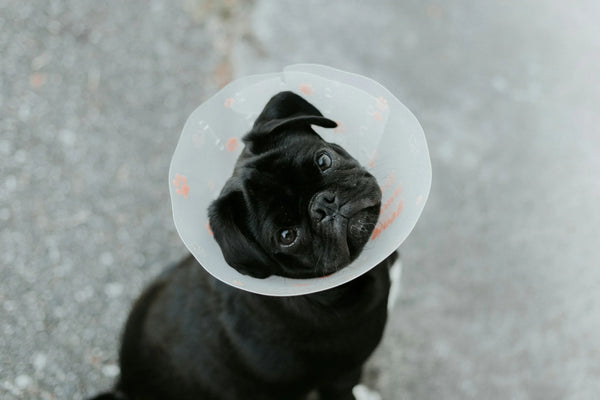Deciding to Desex a Dog: Factors to Consider
Welcome to an important discussion for every pet owner – deciding to desex a dog. This significant decision comes with both advantages and potential consequences, making it crucial for dog owners to fully understand what's involved.
Desexing, also known as spaying or neutering, involves the surgical removal of a dog,'s reproductive organs. It's a step that can impact the health and behaviour of both female dogs (desexing female dogs) and male dogs (desexing male dogs) in various ways.
This decision not only affects your furry friend's well-being but also has broader implications for animal welfare and population control. As such, it's essential for pet owners to consider all factors, including health benefits, behavioural changes, and ethical considerations, before making this important choice for their beloved pet.

Dog Desex Meaning
Desexing a dog is a surgical procedure that involves the removal of a dog's reproductive organs. In female dogs, this process is known explicitly as spaying and typically involves the removal of the ovaries and often the uterus. In male dogs, the process is called neutering and involves the removal of the testicles.
The primary aim of desexing a dog across Asutralia is to prevent unwanted pregnancies, which helps control the pet population and reduce the number of dogs in shelters. Additionally, desexing dogs can significantly reduce the risk of certain health issues, such as mammary tumours in female dogs and prostate problems in male dogs.
Choosing to desex a dog can also have a positive impact on its behaviour. For instance, it can reduce aggressive tendencies and roaming in male dogs and eliminate heat cycles in female dogs, making them more comfortable and easier to manage.
If your dog likes to roam or is an escape artist, consider boosting its safety with an embroidered accessory set, like our collar and lead bundle. Your pup’s name and phone number will be permanently embroidered on their collar, and for extra security, on their lead as well.
Overall, understanding the dog desexing meaning is crucial for pet owners who are considering this procedure for their furry companions.
Desexing Female Dogs: A Comprehensive Guide

Overall, the decision to desex a female dog comes with numerous benefits, including health advantages and potentially positive changes in behaviour. Ensuring a proper recovery and consulting with your vet for personalised advice are key steps in the process.
The Decision to Desex a Dog (Female)
When deciding to desex a female dog, it's crucial to understand the implications and benefits of the procedure. This procedure is not only a preventive measure against unwanted pregnancies but also offers significant health benefits.
By desexing a female dog, you can substantially reduce the risk of mammary tumours, which are often cancerous in dogs. Additionally, spaying eliminates the risk of uterine infections, also known as pyometra, which can be life-threatening if left untreated.
Female Dog Desexing Recovery Time
The recovery time after desexing a female dog generally ranges from 10 to 14 days. During this recovery period, it's essential to monitor the female dog desexing wound closely to ensure proper healing.
It's important to keep your dog calm and restrict any vigorous activity that could disrupt the healing process. Your vet may also provide a protective collar to prevent your dog from licking or biting the incision site. Adhering to your vet's post-operative care instructions is crucial for a smooth and speedy dog desexing recovery.
Female Dog Behaviour After Desexing
Desexing a female dog can lead to changes in behaviour. One of the most notable changes is a reduced tendency to roam, as the dog will no longer experience the hormonal urge to find a mate during heat cycles.
Our dog coats come with name and phone number embroidery options for your peace of mind on every walk.
Additionally, the absence of heat cycles results in a calmer demeanour, as the dog will no longer experience the associated hormonal fluctuations. It's important to note that while desexing can lead to positive behavioural changes, each dog is unique, and the extent of these changes can vary.
Desexing Male Dogs: Understanding the Benefits and Outcomes

Desexing male dogs, commonly referred to as neutering, is a surgical procedure that involves removing the testicles. This process is a crucial step in responsible pet ownership and offers several health and behavioural benefits.
By choosing to desex a male dog, owners can significantly reduce the risk of prostate issues and testicular cancer, two common health concerns in intact males. Additionally, neutering can lead to a decrease in aggressive behaviour, making it a valuable procedure for managing temperament.
Male Dog Behaviour After Desexing
One of pet owners' most common questions is, "Does desexing calm a male dog?" The answer is generally yes. Neutered male dogs often exhibit less aggression and are less likely to roam in search of a mate, which can reduce the risk of accidents or getting lost.
Furthermore, desexing can also decrease the occurrence of marking behaviours, a common issue in intact males. While individual results can vary, the overall trend is that neutering leads to more manageable and predictable behaviour in male dogs.
It's important to note that while desexing can influence behaviour, it is not a cure-all for behavioural problems. Training and socialisation remain key components of raising a well-behaved dog. However, owners can create a solid foundation for good behaviour and overall well-being by choosing to desex a male dog.
Enhance Your Dog's Safety with These Name Embroidery Collars and Harnesses

Regardless of your decision to desex your dog, ensuring their safety is paramount. Personalised collars and harnesses from PetCollars AU, with your dog's name and your contact details embroidery provide an extra layer of security for your beloved pet. These custom accessories ensure that your dog can be easily identified and returned to you if they ever get lost.
In conclusion, deciding to desex a dog is a significant choice that requires careful consideration of the benefits and potential drawbacks. Consulting with your vet and weighing the factors specific to your dog's health and behaviour will help you make an informed decision.
FAQs Before Making a Decision to Desex a Dog
Whether it's a female dog desexing or desexing male dogs, pet owners often have several questions. Here are some common FAQs to help you make an informed decision:
How long does desexing a female dog take?
The surgical procedure to desex a dog (female), also known as spaying, usually takes less than an hour. However, your dog's total time at the vet may be longer due to necessary pre-surgery preparations and post-surgery recovery time. Your vet will provide specific instructions on preparing your dog for the surgery and what to expect during the recovery process.
When to desex a female dog?
It's generally recommended to desex female dogs before their first heat, which typically occurs around 6 months of age. Desexing at this age can help prevent certain health issues and unwanted behaviours.
However, the best timing can vary based on your dog's breed, size, and overall health. Consult with your vet to determine the most appropriate time for desexing your female dog.
Does desexing calm a male dog?

Yes, in many cases, desexing can lead to a calmer demeanour in male dogs. Neutering a male dog can reduce aggressive behaviour, roaming tendencies, and marking behaviours. While individual results may vary, desexing is often effective in creating a more relaxed and manageable pet.
Puppy desexing, is it safe?
Puppy desexing is possible and can be performed as young as 8 weeks old. However, the best timing for desexing a puppy depends on various factors, including breed, size, and health. Consult with your vet to determine the ideal age for desexing your puppy.
What is the female dog desexing wound care?
Proper wound care is crucial for a smooth recovery after female dog desexing. Keep the wound clean and dry, and prevent your dog from licking or biting the area. Follow your vet's instructions closely and monitor the wound for any signs of infection or unusual swelling.




